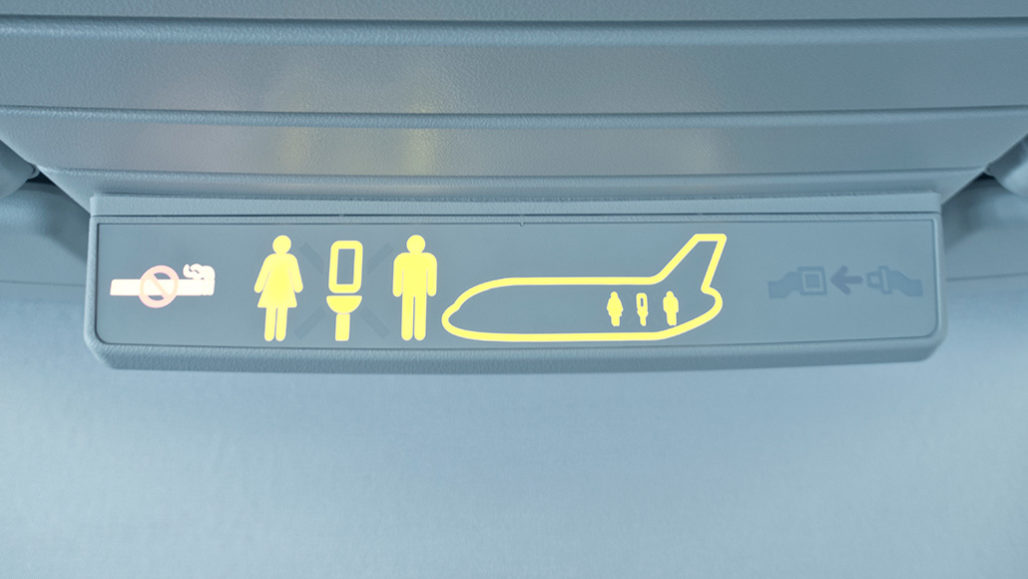Globetrotting microbes in airplane sewage may spread antibiotic resistance
About nine in every 10 E. coli tested from plane wastes were resistant to at least one drug

Airplane sewage contains a mix of microbes from around the world. That sewage also has the genes that make those bacteria resistant to antibiotic drugs.
servet yigit/iStock/Getty Images Plus
Sewage from airplanes is a melting pot for gut microbes from around the world. And all that passenger poop is loaded with bacteria that resist antibiotics, new data show. That means airplane sewage could be spreading tough-to-kill germs that can cause disease.
Doctors use antibiotic drugs to treat people infected with bacteria. Some bacteria have evolved genes that now help them survive these drugs designed to kill them. This is called antibiotic resistance. Such resistance makes it harder to treat those infections.
Stefanie Hess studies bacteria. This microbiologist works in Germany at the Technical University of Dresden. She is part of a research team that collected sewage from five German airports. That’s where waste from airplane toilets eventually lands. The scientists looked at a common gut dweller called Escherichia coli (Esh-ur-EESH-ee-uh KOH-lye), or E. coli for short. They tested if these bacteria resisted any of 24 antibiotics.
About nine in every 10 E. coli sampled from the plane wastes resisted at least one drug. That’s a lot higher than the share of drug-resistant E. coli in regular sewage. In waste going to German wastewater treatment plants, closer to half — 45 to 60 percent — of E. coli resisted one or more drugs. The microbes from airplane sewage also were more likely to resist multiple groups of antibiotics. The scientists reported their findings in the December 3 Environmental Science & Technology.
“This is really important work,” says Amy Pruden. She’s an environmental engineer at Virginia Tech in Blacksburg who was not involved with the study. “You read it and you think, ‘somebody should have done this sooner,’” she says.
Microbes that are resistant to multiple drugs can be very hard to kill. They can cause infections that are difficult to treat. Some even prove deadly. In fact, infections of resistant fungi and bacteria kill around 35,000 people in the United States every year.
“This study clearly shows that the antibiotic-resistance problem is a global problem,” says Hess. So this severe health threat needs global efforts to tackle it, she says.
What gets flushed
Hospitals are known to be hotbeds for drug-resistant germs. That’s because these places use a lot of antibiotics. Some microbes will fall prey to these drugs. But killing them off leaves behind the ones that are able to resist the drugs. These resistant germs can thrive and spread. Scientists and public health officials have tended to focus on hospitals when scouting for such so-called superbugs. But airport sewage may deserve special attention too, Pruden says.
Way more jet-setting E. coli were drug-resistant than were their hospital cousins. Nearly 30 percent were immune to three specific types of drugs, Hess and her team found. That’s a whopping eight times as many as other scientists had found for E. coli in German hospitals.
Airport sewage also held more copies of the genes that let microbes escape antibiotics. And there were more types of them in the airport wastes. When microbes mingle in airplane sewage, they can trade these resistance genes.
Antibiotic resistance genes have a “particularly scary ability,” notes Carlos Amábile-Cuevas. He’s a microbiologist in Mexico. He works at the Lusara Foundation in Mexico City and wasn’t part of the work. Genes can shuffle within a microbe’s DNA, then move to its neighbors, he explains.
The research team didn’t find a boost in drug-resistant microbes in treatment plants that received waste from airports. But Cuevas suspects that’s because those plants receive lots of waste from nearby cities. All the extra waste makes it harder to find the drug-resistant microbes.
“This doesn’t mean that these bugs aren’t there,” says Amábile-Cuevas. “They are just below our detection range. And this is also very scary.”
Resistant bacteria and resistance genes can enter the environment in treated wastewater. There, they can share resistance genes with other bacteria. So Amábile-Cuevas and others are looking at ways to destroy these genes and microbes during water treatment.
Resistant microbes are known to get around in many ways. They can hitch a ride with people or animals. They can even travel in food. Airplane waste is just another way resistance spreads, Amábile-Cuevas notes. The new data now highlight how hard it is to control resistance. People in one place can carefully control how they use and dispose of germ-killing drugs. Still, they may end up with resistant microbes thanks to a nearby airport. Some people might think resistance can be contained in a city or country, he says. But “this is really not true at all.”







